It takes different times for the egg to pass through the various sections of the oviduct (egg tube), where the addition of the shell taking the longest time:
- 15 minutes in the infundibulum (fertilised here if cockerel available plus chalazae added)
- 3 hours in the magnum to add the 2 albumens (whites of egg)
- 1.5 hours in the isthmus to add shell membrane
- 20 hours in the uterus/shell gland for shell deposition plus pigment
- 1 minute in the vagina which is extruded out past the vent to avoid the faeces
This total of 25 hours to lay an egg explains why most hens do not lay every day as the hen will ovulate 30 minutes after laying and eventually it is dark when this should happen: she then misses producing an egg the next day. The hybrid hens have been selected for a slightly shorter time to produce an egg, hence they lay on consecutive days for longer. Brown eggs have pigment placed on the outside of the shell which can scratch or wash off. The only egg which has pigment all the way through the shell is from breeds such as the Araucana, which lay a blue/green egg. The shell is porous and so if eggs are to be washed (clean nestboxes and clean hens’ feet is preferable), water warmer than the eggs should be used with an appropriate *disinfectant so that the shell membrane expands and blocks the pores. If water colder than the eggs is used, the shell membrane will shrink and draw in any bacteria on the shell.
If the eggs are needed to be fertile, there are semen storage glands in the oviduct so the cockerel does not need to be with the hens every day, important if the hens are exhibited so that their feathers do not get damaged. If another breed cockerel has been used and a different cockerel is wanting to be used (for instance, to change to a pure breed) you will need to wait 2 weeks for the eggs to be true to the new cockerel, due to the semen storage capacity.
The composition of an egg is important as it is how a fresh egg is determined. The airspace is very small in a new-laid egg and gets progressively larger as the egg loses moisture through the porous shell. When a fresh egg is cracked onto a plate, the thin white and the thick white are easily distinguished and the yolk sits in a defined dome on top of the white. The two chalazae can also be seen. An un-fresh egg will appear to have only one type of white, no clear chalazae and will be flat when viewed from the side. Sometimes there may be a small brown mark in the white, this is a tiny amount of blood (known as a meat spot) and although it is not harmful, it just looks unpleasant. Commercial eggs are candled (looked at in a dark room with a bright torch held to the egg) to remove any with meat spots. Fertile eggs may be candled to check on the development of the embryo. The colour of the yolk depends on feeding and commercial feed has additives to enhance yolk colour. Carotenoids in green plants are the basis of yolk colour, so outdoor birds usually have darker yolks in the summer and paler in the winter.
Laying is hormonal and influenced by light levels, thus we are able to influence laying in the shorter days by providing extra light in the henhouse. In a hut 2m x 2m (6’ x 6’) a 40 watt bulb lit up to create 14 hours of light in total including daylight would be sufficient. It is important that hens have twilight to persuade them to go to roost, so fitting a 15 minute dimmer is a good idea, otherwise when the lights go out they are stranded on the floor and would really prefer to perch. It suits some people to organise the lights to come on in the morning instead, removing the need for a dimmer, but this may create noise and disturbance for your neighbours.
Turkeys are similar to chickens in their reproduction except for the capacity and efficiency of the semen storage glands. The record of production of a fertile egg after a male has been removed from the female belongs to a turkey and is 72 days! Therefore if turkeys are needed to breed pure, the breeding pens must be set up in January so that when the hens begin to lay in March, the correct stag has fertilised the eggs.
Laying in ducks seems to be less influenced by light levels than hens as light breed ducks do lay in winter. In fact, it is a duck which holds the record for eggs in a year – 364! This was exceptional and could never be achieved by a chicken due to the 25.5 hours it takes to create a chicken egg as ducks take just 24 hours.
It is important to collect the eggs every day as the shells of waterfowl eggs are more porous than chickens' and thus bacteria can easily enter the egg. If the eggs are wanted for eating, they should be washed if dirty with water warmer than the eggs together with an appropriate disinfectantand then stored in the fridge at a temperature of not more than 4°C (39°F).
The texture of duck eggs when cooked is different from chicken eggs. The white of duck eggs seems rubbery and therefore a boiled egg is rather an acquired taste. However, using duck eggs in all other forms of cooking adds a special element of taste and moisture.
As ducks take 24 hours to create an egg, laying tends to be in the early morning, hence do not let them out until 9am so that you can collect the eggs before they become targeted by vermin (link). In winter, keep the nesting area well filled with straw to help prevent the eggs getting frosted which if they do, will crack the shell and change the protein structure, making the egg behave unpredictably in cooking and certainly un-saleable.
Geese get to adult size at about 5 months. They are usually kept as pairs or trios due to the guarding properties of the gander. They can be sold as day-olds, growers or adult proven breeders. It is unlikely they will lay and breed before they are a year old with the possible exception of the Chinese laying eggs in their first autumn but these eggs are very unlikely to be fertile. Most breeders of exhibition stock will only sell pairs or trios i.e. including a gander so try and negotiate for females not quite good enough for the show pen, for instance, remembering that the heavier breeds will lay less in any case.
Laying in geese begins traditionally on St. Valentine’s Day, 14th February, but much depends on the weather at this time. It is important to collect the eggs every day otherwise geese will go broody and then egg production stops. If the eggs are wanted for eating, they should be washed if dirty with water warmer than the eggs together with an appropriate disinfectant, and then stored in a cool (10˚C, 50˚F) place, on damp sand is good. The texture of goose eggs when cooked is similar to duck eggs, but goose egg yolks tend to be a darker orange. Not many people would manage a whole boiled goose egg, so they are used more in cooking. Omelettes or scrambled eggs are favourites. In frosty weather, just as with ducks, keep the nesting area well filled with straw to help prevent the eggs getting frosted which if they do, will crack the shell and change the protein structure, making the egg behave unpredictably in cooking, certainly un-hatchable and probably un-saleable.
A cockerel is not needed for egg production but there are various regulations which you need to know of if you are planning to sell eggs from your hens.
Check on the DEFRA website for any updates (link), but the egg quality grading standards, published as 'EMR01' by Animal Health entitled 'Guidance on legislation covering the marketing of eggs' (revised April 2017) is what you will need to look at.
The keeping of a cock bird with a laying flock is acceptable since it is acknowledged that the possible existence of a germ cell within class ‘A’ graded eggs can happen. The guidelines say at paragraph 15, under 'quality grading and storage of eggs': 'Germ: imperceptible development'. So it appears a developing germ cell is allowable in a grade ‘A’ egg but only if its development is imperceptible at the time of grading.
Further, unwanted, development of any germ cell will be avoided when customers follow the advice to 'Keep eggs chilled after purchase' which must appear on all packs of graded eggs. But, of course, the actions of consumers are beyond the control of producers who do everything in their power to provide good quality, safe eggs at the point of sale.
Unregistered egg producers dealing directly with consumers must not grade their eggs but would do well to follow the same guidelines since they are still covered by the Food Safety Act and due diligence provisions.
* For a list of DEFRA approved disinfectants, see Annex ‘N’ of ‘Code of practice for Lion eggs’ V.7 issued on 30/11/13 by The British Egg Industry Council’.



